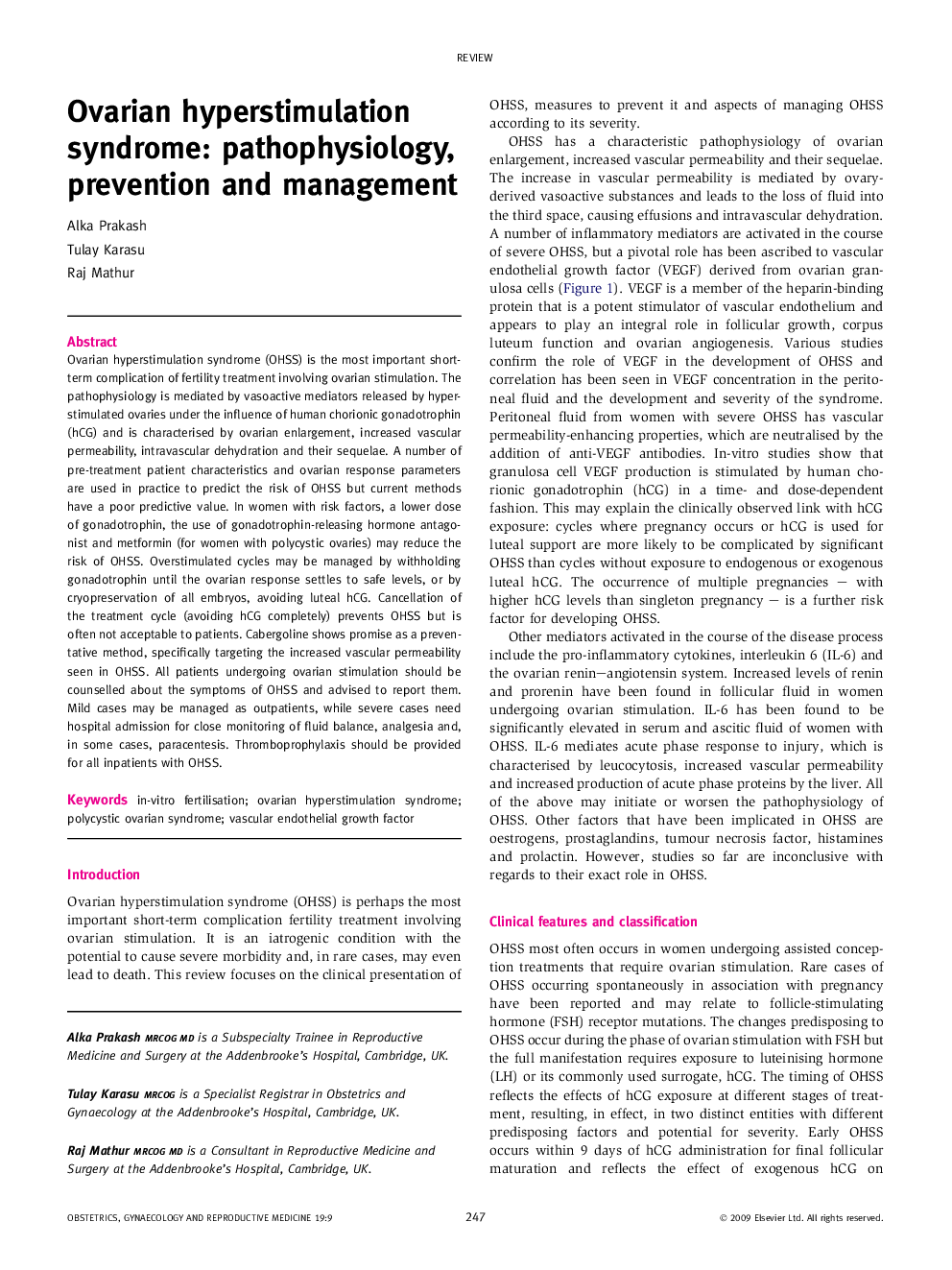| Article ID | Journal | Published Year | Pages | File Type |
|---|---|---|---|---|
| 3967187 | Obstetrics, Gynaecology & Reproductive Medicine | 2009 | 6 Pages |
Ovarian hyperstimulation syndrome (OHSS) is the most important short-term complication of fertility treatment involving ovarian stimulation. The pathophysiology is mediated by vasoactive mediators released by hyperstimulated ovaries under the influence of human chorionic gonadotrophin (hCG) and is characterised by ovarian enlargement, increased vascular permeability, intravascular dehydration and their sequelae. A number of pre-treatment patient characteristics and ovarian response parameters are used in practice to predict the risk of OHSS but current methods have a poor predictive value. In women with risk factors, a lower dose of gonadotrophin, the use of gonadotrophin-releasing hormone antagonist and metformin (for women with polycystic ovaries) may reduce the risk of OHSS. Overstimulated cycles may be managed by withholding gonadotrophin until the ovarian response settles to safe levels, or by cryopreservation of all embryos, avoiding luteal hCG. Cancellation of the treatment cycle (avoiding hCG completely) prevents OHSS but is often not acceptable to patients. Cabergoline shows promise as a preventative method, specifically targeting the increased vascular permeability seen in OHSS. All patients undergoing ovarian stimulation should be counselled about the symptoms of OHSS and advised to report them. Mild cases may be managed as outpatients, while severe cases need hospital admission for close monitoring of fluid balance, analgesia and, in some cases, paracentesis. Thromboprophylaxis should be provided for all inpatients with OHSS.
